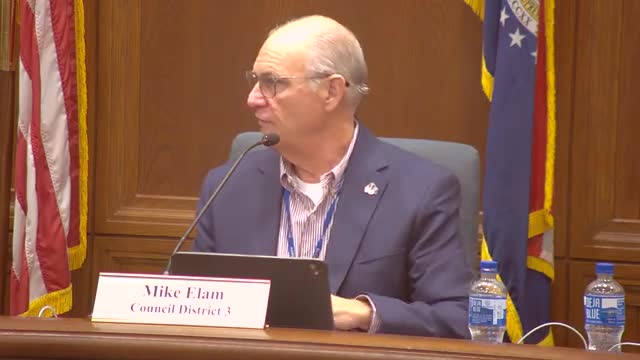Saint Charles County Council Addresses 2025 Tax Rates and Community Issues
September 30, 2025 | St. Charles County, Missouri
This article was created by AI summarizing key points discussed. AI makes mistakes, so for full details and context, please refer to the video of the full meeting. Please report any errors so we can fix them. Report an error »

As the evening sun dipped below the horizon, casting a warm glow over St. Charles County, council members gathered in the familiar setting of city hall, ready to tackle pressing issues affecting their community. The atmosphere buzzed with anticipation as Barry Bales, the public information officer for the St. Charles County Police Department, led the invocation, setting a tone of unity and purpose for the meeting.
The council quickly turned its attention to a significant topic: the establishment of tax rates for 2025. This public hearing drew attention from residents, with Arnie Deanoff, a county public advocate, stepping forward to voice concerns about the rising property taxes that have burdened many households. Deanoff highlighted alarming trends, noting that property assessments in the county have doubled for many residents over the past decade, with increases ranging from 7% to 28% depending on the area.
He emphasized the financial strain on families, stating that nearly 57% of income is now allocated to various taxes at multiple levels of government. In light of these challenges, Deanoff urged the council to consider reducing the county's road and bridge tax levy and the dispatch and alarm fund, proposing a phased reduction over five years. His recommendations aimed to alleviate the financial pressure on residents, advocating for a tax structure that reflects the county's reliance on sales tax rather than property taxes.
The discussion underscored a growing concern among residents about the sustainability of tax rates in an era of economic uncertainty. As the council listened intently, the implications of these decisions loomed large, with many residents hoping for relief in their upcoming tax bills.
As the meeting progressed, the council members remained engaged, reflecting the community's desire for transparency and accountability in local governance. The evening's discussions not only highlighted the immediate financial concerns of St. Charles County residents but also set the stage for future deliberations on how best to balance the county's budgetary needs with the economic realities faced by its citizens.
The council quickly turned its attention to a significant topic: the establishment of tax rates for 2025. This public hearing drew attention from residents, with Arnie Deanoff, a county public advocate, stepping forward to voice concerns about the rising property taxes that have burdened many households. Deanoff highlighted alarming trends, noting that property assessments in the county have doubled for many residents over the past decade, with increases ranging from 7% to 28% depending on the area.
He emphasized the financial strain on families, stating that nearly 57% of income is now allocated to various taxes at multiple levels of government. In light of these challenges, Deanoff urged the council to consider reducing the county's road and bridge tax levy and the dispatch and alarm fund, proposing a phased reduction over five years. His recommendations aimed to alleviate the financial pressure on residents, advocating for a tax structure that reflects the county's reliance on sales tax rather than property taxes.
The discussion underscored a growing concern among residents about the sustainability of tax rates in an era of economic uncertainty. As the council listened intently, the implications of these decisions loomed large, with many residents hoping for relief in their upcoming tax bills.
As the meeting progressed, the council members remained engaged, reflecting the community's desire for transparency and accountability in local governance. The evening's discussions not only highlighted the immediate financial concerns of St. Charles County residents but also set the stage for future deliberations on how best to balance the county's budgetary needs with the economic realities faced by its citizens.
View full meeting
This article is based on a recent meeting—watch the full video and explore the complete transcript for deeper insights into the discussion.
View full meeting
